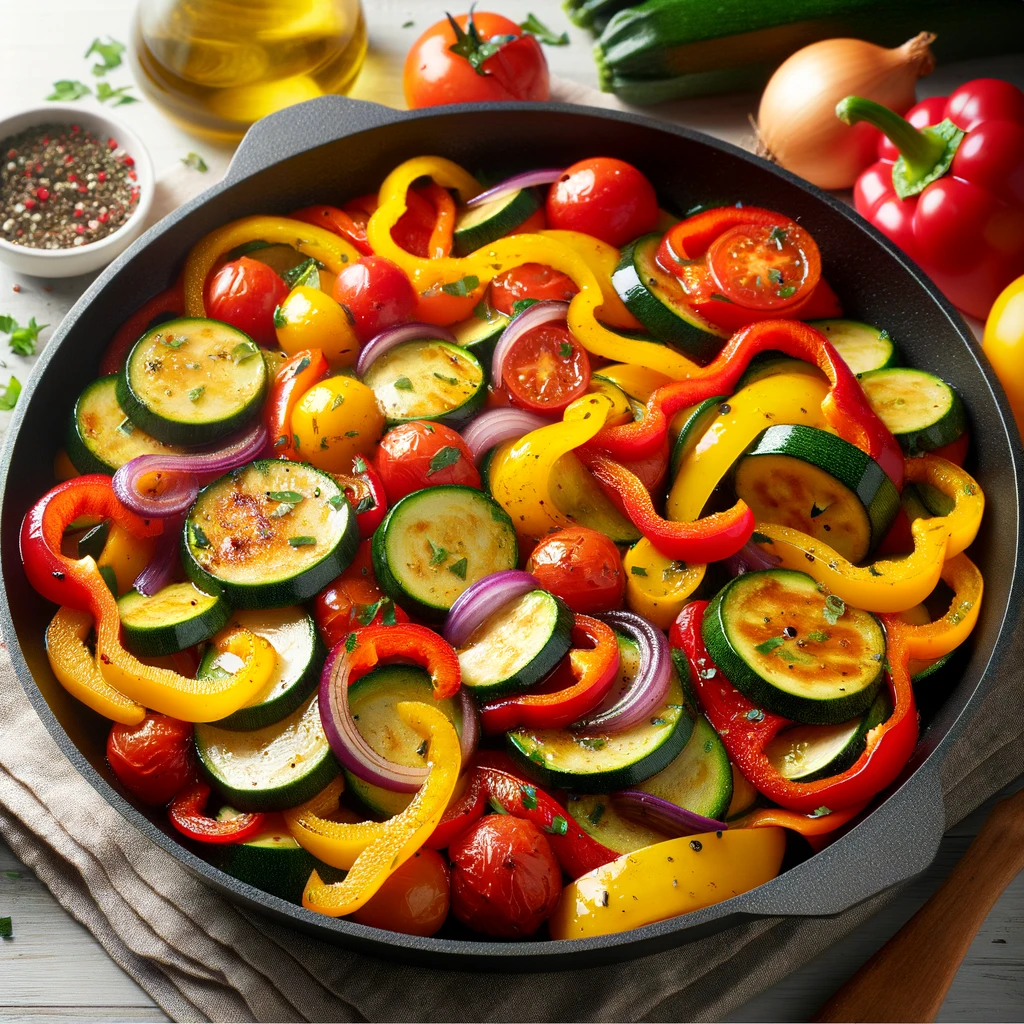Introduction
Sautéing is one of the fundamental cooking techniques that every home cook should master. This method, originating from the French word “sauter,” meaning “to jump,” involves cooking food quickly in a small amount of oil or fat over relatively high heat. Perfect for vegetables, meats, and even some grains, sautéing can help you create delicious and flavorful dishes with ease. In this blog post, we will delve into the basics of sautéing, providing tips and techniques to help you sauté like a pro.
Ingredients
To practice sautéing, let’s prepare a simple yet delicious Sautéed Vegetable Medley. You will need the following ingredients:
- 2 tablespoons olive oil or butter
- 1 red bell pepper, sliced
- 1 yellow bell pepper, sliced
- 1 zucchini, sliced
- 1 yellow squash, sliced
- 1 small red onion, thinly sliced
- 2 cloves garlic, minced
- Salt and pepper to taste
- Fresh herbs (such as basil, parsley, or thyme) for garnish
Preparation Steps
- Preheat the Pan:
- Start by placing a large skillet over medium-high heat. Allow the pan to heat up for a minute or two before adding any oil or fat. A properly preheated pan is essential for effective sautéing.
- Add the Oil:
- Once the pan is hot, add the olive oil or butter. Swirl the pan to coat the bottom evenly. The oil should shimmer but not smoke, indicating it’s ready for sautéing.
- Cook the Vegetables:
- Add the sliced red and yellow bell peppers to the pan. Sauté for about 2-3 minutes until they start to soften.
- Next, add the zucchini and yellow squash. Continue to sauté for another 3-4 minutes, stirring occasionally to ensure even cooking.
- Add the thinly sliced red onion and minced garlic. Sauté for an additional 2-3 minutes until the vegetables are tender and slightly caramelized. Season with salt and pepper to taste.
- Finish and Serve:
- Remove the pan from the heat and transfer the sautéed vegetables to a serving dish. Garnish with fresh herbs before serving.
Historical Context
Sautéing has a rich history in French cuisine, where it has been a staple cooking technique for centuries. The method is valued for its ability to quickly cook food while preserving its texture and flavor. Over time, sautéing has become a universal technique, embraced by various culinary traditions around the world. Its versatility makes it a go-to method for preparing a wide range of dishes, from simple vegetable sides to complex main courses.
Nutritional Information
Sautéing is a healthy cooking method as it uses minimal fat and retains the nutrients in the food. Here are some key nutritional benefits of our Sautéed Vegetable Medley:
- Vitamins and Minerals: Bell peppers, zucchini, and squash are rich in vitamins A and C, potassium, and magnesium.
- Low in Calories: This dish is low in calories, making it a great option for those looking to maintain a balanced diet.
- Healthy Fats: Using olive oil provides healthy monounsaturated fats that are beneficial for heart health.
Conclusion
Mastering the art of sautéing opens up a world of culinary possibilities. This quick and efficient cooking method enhances the natural flavors of ingredients, making your meals more enjoyable. Try sautéing various vegetables, proteins, and grains to create diverse and delicious dishes. For more cooking tips and recipes, visit our blog!
Call to Action
Interested in learning more essential cooking techniques? Visit CookingBot.com for more educational guides and recipes to elevate your culinary skills! Join the ranks of ChefBot and RecipeBot enthusiasts in discovering new and exciting ways to enhance your cooking repertoire.

